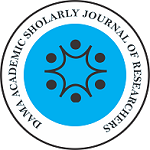Authors:Agustian Ipa1, Bambang Wirjatmadi2, Shrimarti Rukmini Devy3, Rudy Hartono4
1Doctoral Student at Faculty of Public Health, Airlangga University, Indonesia and
Lecturer at Department of Nutrition, Health Polytechnic of Ministry of Health in Makassar, Indonesia
2&3Lecturer at Faculty of Public Health, Airlangga University, Indonesia
4Lecturer at Department of Nutrition, Health Polytechnic of Ministry of Health in Makassar, Indonesia
Abstract
Feeding for children is not merely related to nutritious food that fits children’s needs, but more broadly about what, when, where and how caregivers feed their children. The design of this study was cross sectional. The population in this study were all children under five in Bonto Bunga Village, Moncongloe Sub-District, Maros Regency. The sample size was 80 children under five. The research variables were knowledge about feeding for children, feeding practices for children, and nutritional status of children under five. The collected data were analyzed using Fisher’s exact test. The result showed that: 1) the practice of feeding was significantly related to the nutritional status of children by height / age, 2) the practice of feeding was significantly related to the nutritional status of children by weight / age, 3) the practice of feeding was not significantly related to the nutritional status of children by weight / height, 4) the knowledge of feeding was not significantly related to the practice of feeding for children. Based on the results of the study can be concluded the practice of providing food for children associated with nutritional status based on height body / age and body weight / age.
Keywords: Feeding practices for children, Nutritional status.

